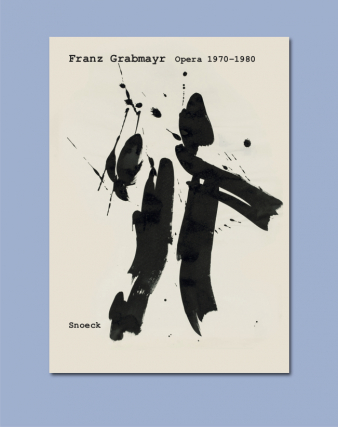* All prices inc. VAT, plus shipping costs
Franz Grabmayr: Opera 1970–1980
Paintings from the Vienna State Opera
Edited by Jakob Grabmayr / Grabmayr Estate
text by Robert Fleck and interviews with the dancers by Patrick Schuster
88 p with 30 coloured illustrations
170 x 128 mm, hardcover
ISBN 978-3-86442-448-9
»Nureyev didn’t stand still in the State Opera when I was working«
»I paint the movement. Then it’s dance! Dance is dynamic!« said Franz Grabmayr (1927–2015) in the 1980s about his »dance paintings«. The post-abstract Viennese painter started his own group of works around 1971 at the Vienna State Opera during ballet training and in the evenings during shows, where he could stand in a corridor next to the stage, virtually between two different curtains, with a view of the performances. Using charcoal and colored inks, he captured the shapes of moving human bodies on paper. In a way, according to Robert Fleck, he has once again activated the studio practice of Auguste Rodin, who often had several nude models walking freely around the room while he modeled them. In Franz Grabmayr’s work, however, the models are expressively exaggerated in the sense of Cézanne’s modulation, just as in his earlier landscape paintings. »The figure is actually torn apart when a dancer works very dynamically, when she moves more slowly, the leaves become flatter. I often let the dancers judge my leaves because they have felt what they have danced. And if they can see the feeling in the sheet, then the sheet is good for them. Nureyev didn’t stand still in the State Opera when I was working. And so I learned to paint rhythmic contexts out of movement.« Robert Fleck therefore relates this approach to the programmatic statements of the avant-garde movement of the 1960s, which propagated the utopian ideal of “direct art”.Franz Grabmayr’s works were closely linked to this idea, which is why the works of Frank Auerbach, Eugène Leroy or Chaim Soutine can also be considered »relatives«. Yet Franz Grabmayr's painting remains solitary, his straw bale motifs, grain fields, trees and rootstocks, his landscape painting and his works on dance and opera are a rejection of any heaviness in painting. If you wish, you can also see in his landscape painting an early artistic addressing of ecological themes. The far more successful young generation of Austrian artists in the 1980s discovered Franz Grabmayr early on as a point of reference. And the exhibition of his work that has just opened at the Albertina in Vienna (until October 2024) now definitively places him in the canon of modern art. And his »dance sheets« and »dance pictures« float in space, standing »for lightness«, as the press writes.
Exhibition:
Vienna State Opera, 7/9/2024 – 30/1/2025











